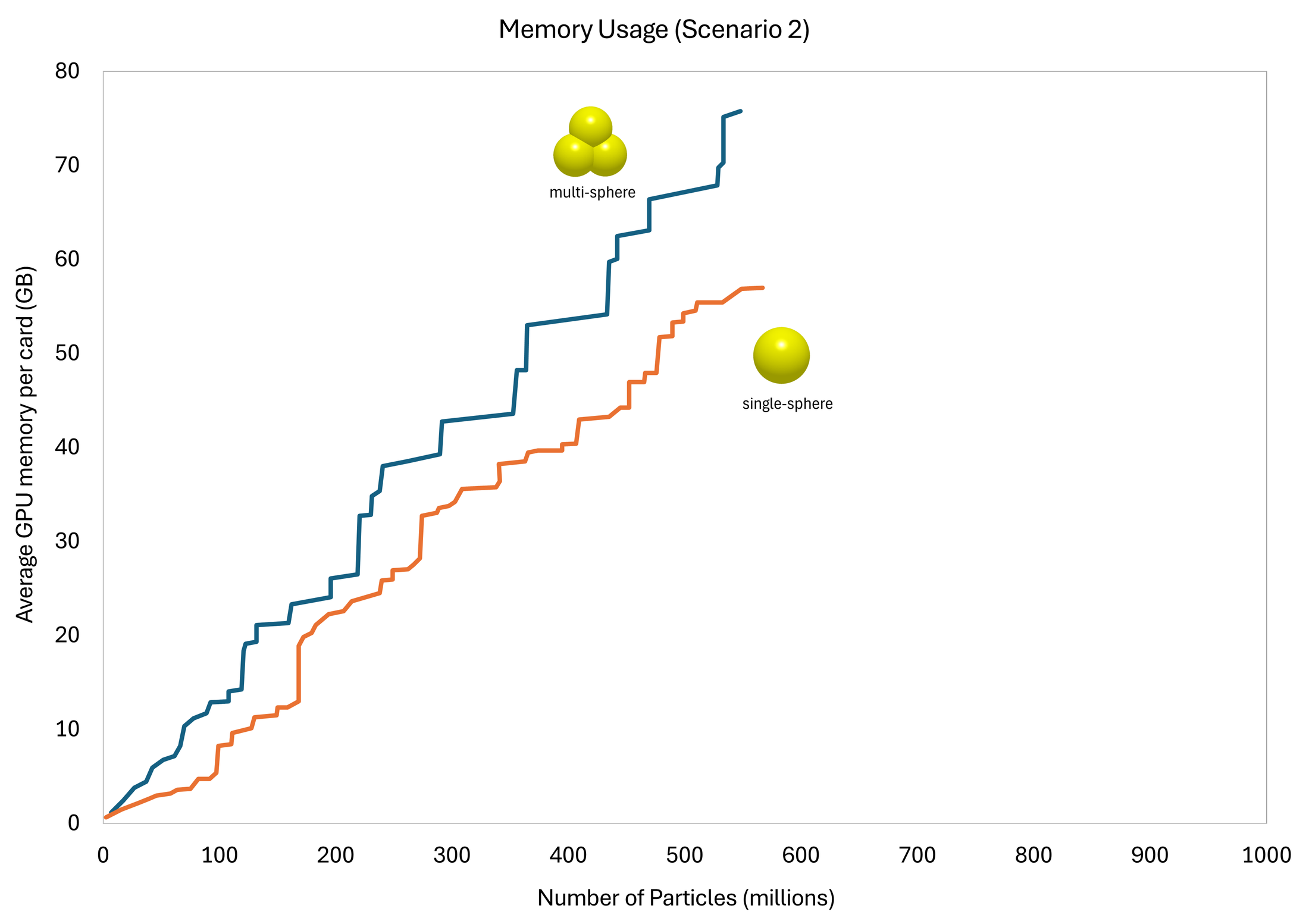Altair EDEM on Google Cloud: Breaking the billion-particle barrier
Dr. Carlos Labra
Director, EDEM Product Simulation
Annie Ma-Weaver
Group Product Manager, Google Cloud
Simulating how bulk and granular materials interact with equipment, containers, and one another is a critical capability for industrial, manufacturing, and life science organizations. The larger these simulations, the more accurate they become, decreasing the time and expense companies must spend iterating designs and prototypes. Altair and Google Cloud recently collaborated to see how large a simulation they could produce using Altair® EDEM™ on a single Google Cloud virtual machine. The results were groundbreaking.
GPUs power EDEM simulations
Altair EDEM is a high-performance software application for bulk and granular material simulation. Powered by discrete element method (DEM) calculations, EDEM quickly and accurately simulates and analyzes the behavior of mined ores, soils, fibers, grains, tablets, powders, and more.
Over the years, industries have been demanding even greater scale from EDEM, resulting in a number of breakthroughs around model size. Two decades ago, the upper limit was 200,000 particles — a simulation that took upwards of 10 days to create. That quickly rose to one million particles, then 10 million, then 20 million. The holy grail today is to achieve a simulation containing 1 billion particles in a few days.
As you might expect, these simulations require a massive degree of computational power, so the usage of graphics processing units (GPUs) has greatly improved the speed and efficiency of simulations. GPUs are specifically designed to handle parallel processing tasks, making them highly efficient for handling the large amounts of data and complex calculations involved in EDEM simulations.
The experiment: Altair EDEM on Google Cloud
Designed as a desktop application, EDEM has always been limited to shared-memory architectures, which exist on a single host. This only allows processors to access it directly, as opposed to distributed memory, which can scale across multiple hosts. Without extensive rebuilding, EDEM cannot take advantage of distributed memory’s scalability and flexibility. However, multi-GPU systems offer an opportunity to increase computational power without needing to migrate toward distributed memory programming models.
There were two goals for the collaboration between Altair and Google Cloud: simulate the largest system possible, containing one billion particles, and gather data to build estimates for mapping a given hardware type to a possible simulation scale. In May 2023, Google Cloud announced the availability of its A3 virtual machines (VMs) with NVIDIA H100 GPUs. The A3 VMs combine NVIDIA H100 Tensor Core GPUs with modern CPU, as well as offering improved host memory and major network upgrades, which made this scale of simulation possible.
Altair and Google Cloud ran two simulation scenarios on a single A3 VM with eight NVIDIA H100 GPUs, each with 80 GB of GPU memory and a total of 3.6 TB/s bisectional bandwidth. The system also included a 4th Generation Intel® Xeon® Scalable processor and 2 TB of host memory.
The test scenario chosen was the filling test. This is a practical simulation used to check the impact of particle behavior in a realistic industrial setting — in this case, particles dropped from a moving plate into a container. Two types of particles were used in this simulation: single-sphere and multi-sphere.
Breakthrough results


As demonstrated above, the combined filing test simulation using single- and multi-sphere EDEM simulations achieves a total 1 billion particle count, with good scaling across the eight available NVIDIA H100 GPUs.
With this new 1 billion particle simulation breakthrough, manufacturing industries can better understand and predict granular material behaviors, evaluate equipment performance, and optimize processes on an unprecedented scale, allowing higher fidelity and larger simulations in the future.
If you’d like to learn more about the EDEM application and would like to explore a trial on Google Cloud, please complete this form. You can learn more about how Google Cloud is enabling HPC workloads here.